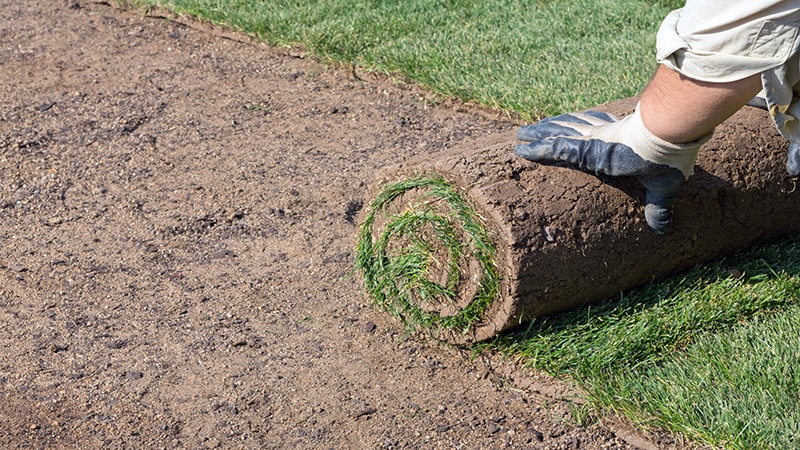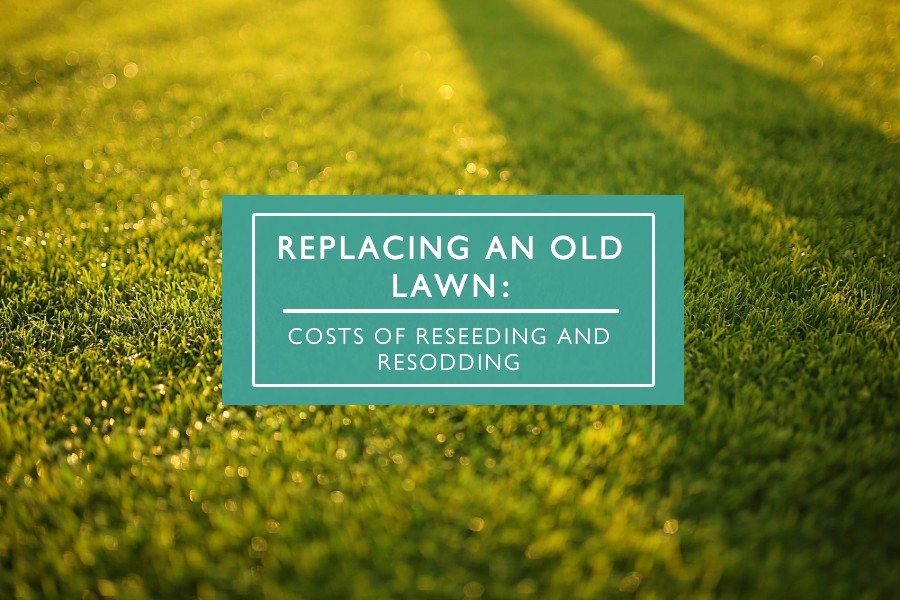Does your lawn have a problem with bare patches, an abundance of weeds, unhealthy grass, or lawn diseases? If you’ve tried different methods to improve the situation, but to no avail, then it’s probably time to replace your lawn. A fresh start may just be the thing it needs to become lush and green again.
The three popular ways of replacing a lawn are by planting it with new seeds, hydroseeding, or laying down new grass using strips of sod. These methods will replace the old lawn with new grass, but each has its own advantages, disadvantages, and different costs.
When Is It Time To Replace A Lawn?
Before we discuss the costs of replacing a lawn, we should first determine if your lawn really does need replacement. Here are some signs you have to watch out for before replacing your lawn:
Bare Patches
While bare patches can be fixed with topsoil or laying down sod, if the yard is almost completely filled with bare spots, then it’s better to till the entire lawn and start fresh.
Weed Growth
If you are tired of weeds growing back, even after targeting and spraying them with a weed killer, another option is to replace the entire lawn. Replacing the lawn with a denser turf can choke out and prevent weeds from coming back. When a lawn started from scratch is applied with a root-killing, this could also keep the new lawn weed-free.
Unhealthy Grass
Do you have grass that keeps dying even after watering it regularly? If you have dead grass, on the surface or underneath healthy ones, it’s probably best to get it replaced. Not only do you need to get new grass seed or sod, but you need to improve the soil conditions. The soil will need to be treated with nutrient-rich topsoil and mulch before placing new sod or grass seeds.
Lawn Diseases
There are many types of lawn diseases, some are curable while others are not. If your yard has been infected with a virus that is lethal and cannot be prevented, then it’s time to get it replaced. It should not be replaced with the same grass type or species but with a virus-resistant type or a different cultivar of the same type.
Prefer A Different Grass
Another reason to replace a lawn is if you don’t like the type of grass. If you’ve moved into a new home, you may want to replace your lawn with a new type because it’s difficult to maintain, costly to irrigate, or you don’t like its appearance. You can ask a sod specialist for the advantages and disadvantages of each type of grass to help you decide.
Lawn Replacement Options & Cost Breakdowns
Reseeding
A more affordable alternative when replacing a lawn is by reseeding or overseeding. While it is a method used for regular maintenance, when the lawn is severely damaged, old grass is removed and replaced with entirely new grass with reseeding. This will let you start with a clean slate, helping you fix a lawn beyond repair.

How much would it cost? With a professional, the cost would be around $0.09 to $0.18 per square foot or $400 to $1,500 in total. This includes $150 to $750 for labor, depending on whether you need to get dead grass removed and the soil raked on top of spreading the seed and fertilizing the lawn. For a DIY lawn replacement, you would spend around $30 to $100 for the seed.
It is less expensive to reseed, but it would take long to do. It takes around a week to a month to reseed, depending on the type of grass and location. It would also take a long time before you see results.
Cost
Pros
Cons
Hydroseeding
Another way to replace a lawn is by hydroseeding, where one sprays a liquid mixture containing water, grass seed, fertilizer, and mulch all over the yard. It is a time-efficient method since one can cover an entire yard quickly and evenly with less effort, but it will be more expensive than reseeding.

Source: Country Lawnscapes
It would cost around $0.06 to $0.20 per square foot, which includes labor. In total, this could land you around $500 to $4,000, depending on the size of your lawn. For small lawns, usually less than 500 square feet, the hourly rate for labor is around $24 to $30 per hour. There are also two DIY options, one is expensive while the other is more affordable. If you prefer getting a hydroseeder, it would cost $1,500 to $10,000. For the more affordable option, you can check out the local lawn or hardware store for kits or spray mixtures, which would cost around $20 to $80, but would be less effective.
It is recommended to hire a professional since they have the necessary equipment and already know how to spray the mixture evenly.
Cost
Pros
Cons
Resodding
Resodding is replacing your lawn with new grass turf that is cut into sections. It looks like a grass mat, which you can buy in rolls. A sod comes with soil and grassroots, so it just needs to be implanted into the landscape. This makes it faster for the lawn to get established since you’ll quickly see a green and lush lawn.

Source: Mansfield Landscaping
Resodding is the more expensive method, which costs around $1 and $2 per square foot or $450 to $4,520 in total. This includes materials and labor for removing old grass and changing the shape of the lawn if needed. Labor costs can range from $35 to $75 per hour. There is also an option to include a sprinkler system, which usually costs around $1,700 to $3,400.
If you decide to do the sod installations yourself, it costs around $0.35 to $0.85 per square foot or $150 to $450 per pallet, depending on the grass type as well as supplier and location. Similar to hydroseeding, it is recommended to hire a professional since they have special equipment to lay evenly and make it look seamless - you wouldn’t want a grid-looking lawn.
>>> Get Quotes From Price Competitive Contractors For Resodding
Cost
Pros
Cons
Additional Costs That Maybe Be Incurred
Some situations may require other materials before or after replacing a lawn. Here are a few of them:
Topsoil
For those who will start from a clean slate, it is important to get some topsoil. This can cost around $20 to $30 per cubic yard. This price will vary depending on the wholesaler or whether you purchase it in bags or from a soil dump. It also doesn’t include the delivery fee, which costs around $50 to $200, depending on the weight and distance; and labor if you will require a professional.
Soil Test Kit
You may need to test the quality of the topsoil because it may affect the results of the installation of sod and other methods. Soil test kits cost around $12 to $20, which can get from home improvement stores or online retailers. You may also want to check local agricultural cooperative extension offices since they may offer free kits. Send a request if you can get a kit delivered. You could also hire a professional to test so you can also get suggestions on how to make your soil more healthy or which nutrients are needed.
Finding a Lawn Replacement Contractor
You may find it frustrating fining a reputable contractor. Sometimes it's like they don't want your business!
That's why we recommend using a network of contractors that compete for your business!
Use the button above to submit your estimate request, and local contractors will call you. This puts you in the drivers seat!


What do you think about hydroseed?
Hyrdoseeding is a good option for a large field or something but it will never be a truly lush lawn.